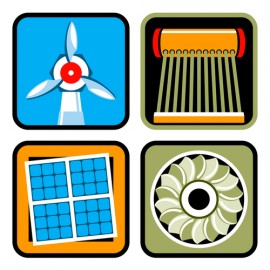 With the price of electricity where it is and getting higher all the time, naturally anything that can reduce those bills is attractive. One way to do this is by generating your own electricity at home. There are three main ways to do this, two of which may not be available to every homeowner. These three sources of power are solar power, wind power, and water power.
With the price of electricity where it is and getting higher all the time, naturally anything that can reduce those bills is attractive. One way to do this is by generating your own electricity at home. There are three main ways to do this, two of which may not be available to every homeowner. These three sources of power are solar power, wind power, and water power.
Regardless of where the power comes from, it will be necessary to also install some electrical equipment to allow effective use of it. This can be an “off-
The utility buys the electricity from you for credit, which is then used to buy power for home use. This deals with the fact that most home power generation is not conveniently focused on the times when you need to use it most. For example, solar power is generated only during the daylight hours, but most electricity use is after dark.
Solar Power
Solar power is generated at home through photovoltaic cells built into solar panels. The panels are placed on the roof and sunlight striking them produces an electric current. The current is either stored in batteries for use when the need is high or, more commonly, fed into the electric power grid and sold to the utility for credit which is used to buy power at times when energy used exceeds energy produced.
A home solar power system can be very costly to install. A professional contractor can install a 2-
Wind Power
Most homes are located where solar power can be used. Wind power requires more specialized conditions to be feasible. Prevailing winds that reliably blow 20-
Wind power can be installed in more or less the same way as solar power. That is, professionals can be hired to install one or more wind turbines plus towers and electrical accessories to generate 2-
Water Power
Fewer homes are able to make use of water power than either solar or wind power. Water power requires a creek, stream, or river on the property with sufficient “head” to generate electricity. “Head” is the vertical drop of the water from the highest point on the property to the lowest. A rough formula for the available power is to multiply the head by the water flow in gallons per minute, and divide by twelve.
Plugging in some real figures to this formula will illustrate the fact that few homes are blessed with enough water-
